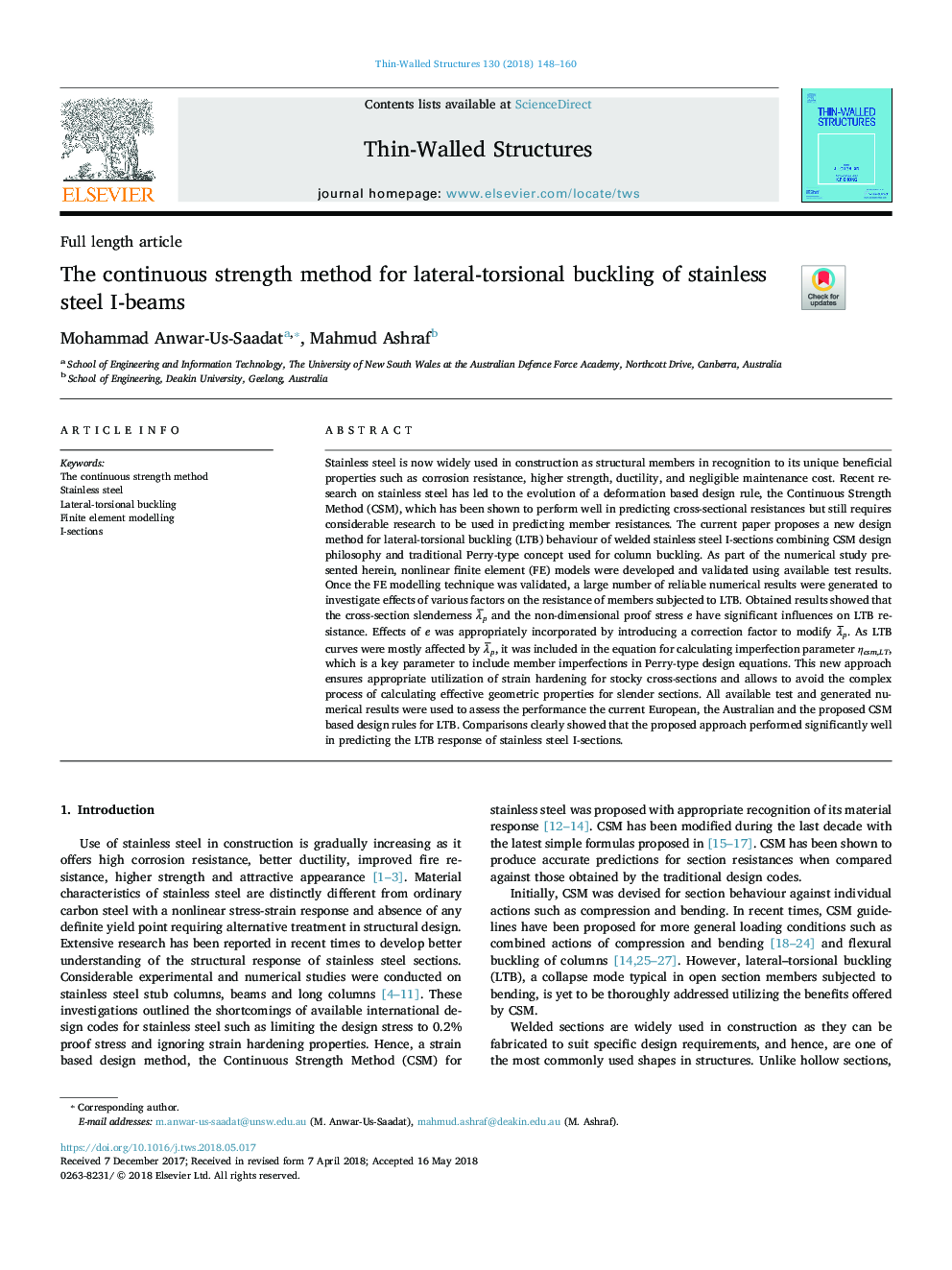| کد مقاله | کد نشریه | سال انتشار | مقاله انگلیسی | نسخه تمام متن |
|---|---|---|---|---|
| 6777169 | 1432061 | 2018 | 13 صفحه PDF | دانلود رایگان |
عنوان انگلیسی مقاله ISI
The continuous strength method for lateral-torsional buckling of stainless steel I-beams
دانلود مقاله + سفارش ترجمه
دانلود مقاله ISI انگلیسی
رایگان برای ایرانیان
کلمات کلیدی
موضوعات مرتبط
مهندسی و علوم پایه
سایر رشته های مهندسی
مهندسی عمران و سازه
پیش نمایش صفحه اول مقاله

چکیده انگلیسی
Stainless steel is now widely used in construction as structural members in recognition to its unique beneficial properties such as corrosion resistance, higher strength, ductility, and negligible maintenance cost. Recent research on stainless steel has led to the evolution of a deformation based design rule, the Continuous Strength Method (CSM), which has been shown to perform well in predicting cross-sectional resistances but still requires considerable research to be used in predicting member resistances. The current paper proposes a new design method for lateral-torsional buckling (LTB) behaviour of welded stainless steel I-sections combining CSM design philosophy and traditional Perry-type concept used for column buckling. As part of the numerical study presented herein, nonlinear finite element (FE) models were developed and validated using available test results. Once the FE modelling technique was validated, a large number of reliable numerical results were generated to investigate effects of various factors on the resistance of members subjected to LTB. Obtained results showed that the cross-section slenderness λ¯p and the non-dimensional proof stress e have significant influences on LTB resistance. Effects of e was appropriately incorporated by introducing a correction factor to modify λ¯p. As LTB curves were mostly affected by λ¯p, it was included in the equation for calculating imperfection parameter ηcsm,LT, which is a key parameter to include member imperfections in Perry-type design equations. This new approach ensures appropriate utilization of strain hardening for stocky cross-sections and allows to avoid the complex process of calculating effective geometric properties for slender sections. All available test and generated numerical results were used to assess the performance the current European, the Australian and the proposed CSM based design rules for LTB. Comparisons clearly showed that the proposed approach performed significantly well in predicting the LTB response of stainless steel I-sections.
ناشر
Database: Elsevier - ScienceDirect (ساینس دایرکت)
Journal: Thin-Walled Structures - Volume 130, September 2018, Pages 148-160
Journal: Thin-Walled Structures - Volume 130, September 2018, Pages 148-160
نویسندگان
Mohammad Anwar-Us-Saadat, Mahmud Ashraf,